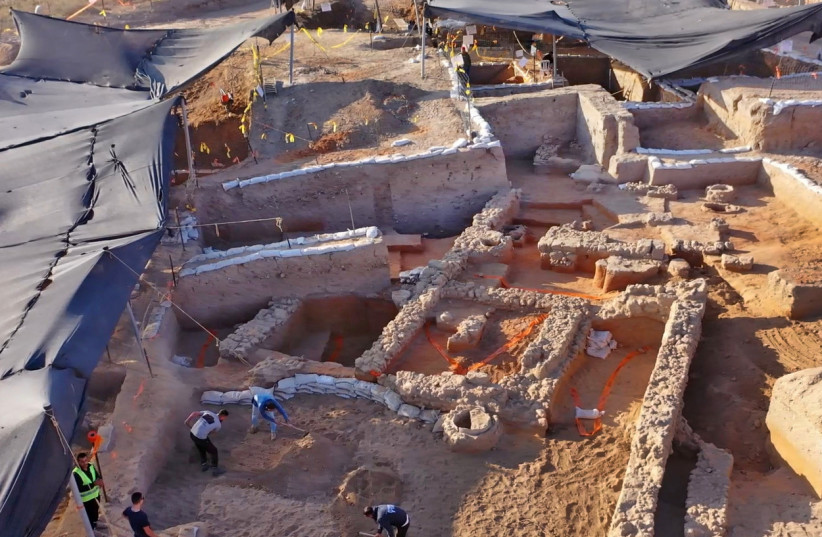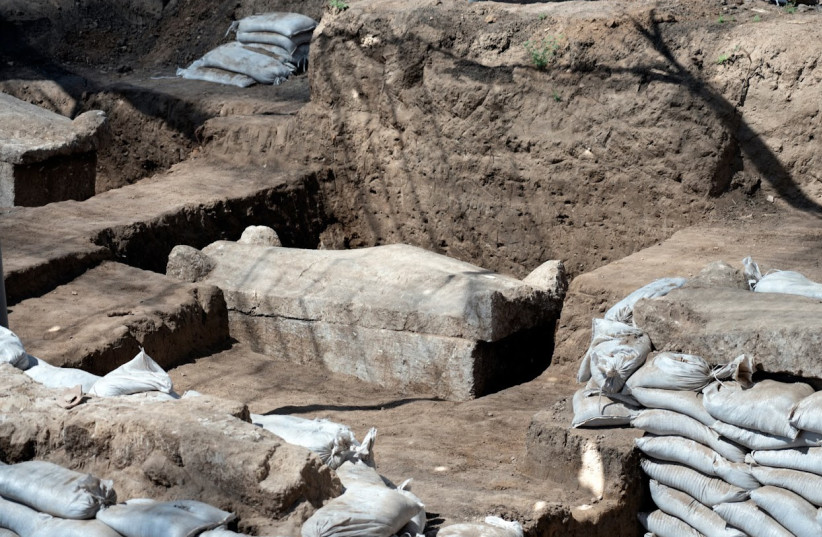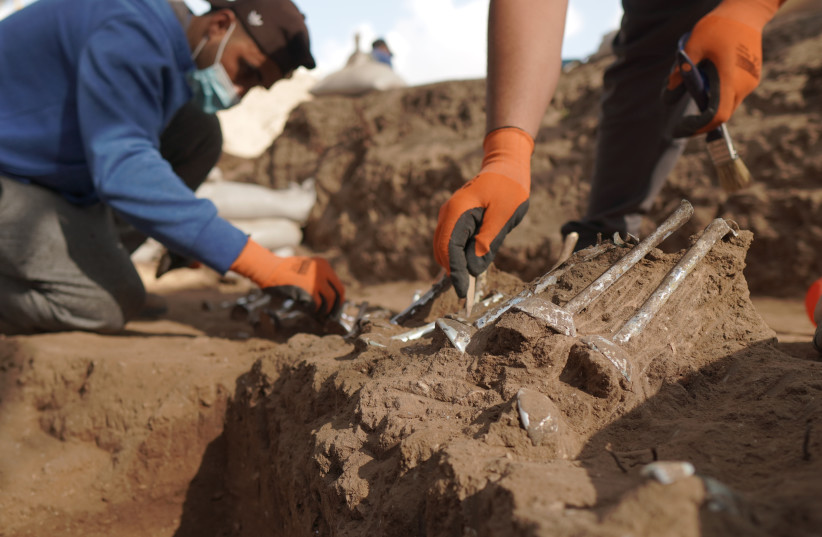 Israeli archaeologists dig up new info on Sanhedrin era in Yavne
Israeli archaeologists dig up new info on Sanhedrin era in Yavne
AARON REICH
The site, like many others nationwide, is open to the public to tour and take part in a number of events throughout Hanukkah for Israel Heritage Week.
.

New archaeological findings in the city of Yavne may shed light on the city 2,000 years ago, when it was the center of Jewish life in the region and home to the Sanhedrin.
The discovery saw the first-ever excavation of a building in Yavne dating back to the time of the Sanhedrin.
The Sanhedrin were groups of twenty-three or seventy-one elders who were appointed to sit as a tribunal in every city in the ancient Land of Israel following the destruction of the Second Temple.
The findings of this excavation, initiated by the Israel Antiquities Authority and the Yavne Municipality and Israel Land Authority, indicate that the occupants of this home kept kosher and other Jewish purity laws.
This was evidenced by the presence of “measuring cups,” vessels identified with Jews in the late Second Temple era that were used to retain ritual purity.
But another impressive find was found just 70 meters away: A cemetery dating back to the same period. On top of these tombs were over 150 glass phials.

“We encountered dozens of carefully arranged tombs spaced out at set distances, which probably indicates the existence of a ‘burial society’—some official body that was responsible for burial,” Israel Antiquities Authority Yavne excavation directors Pablo Betzer and Dr. Daniel Varga said in a statement.
“There are different types of tombs: some are coffins (sarcophagi), which are made mostly of stone with one lead coffin.”
The excavation directors add that “based on the cemetery’s location, it was probably established outside the boundaries of the city, in accordance with Jewish and Roman law. Were the interred individuals Jews, or pagans? It is too early to say, since there are no ethnic symbols on the coffins. With all due caution, the historical records and archaeological finds raise the possibility that these are the tombs of the city’s Jewish community. If this hypothesis is correct, then at least some of the tombs, perhaps the most elaborate, may belong to the sages of Yavne, contemporaries of Rabban Yohanan ben Zakkai, Rabbi Akiva and Rabban Gamliel.”
But why were the glass phials there?
According to Israel Antiquities Authority glass department head Dr. Yael Gorin-Rosen, the nature of the phials themselves wasn’t strange, but their placement was.
“The phials were probably used to keep precious liquids such as fragrant oils. About half of them were locally produced and the other half were imported from Alexandria in Egypt,” she explained.

“Phials of this type have been recovered in excavations at both Jewish and pagan burial sites from the first to the early third centuries CE. It is a mystery why the phials were placed outside the tombs in Yavne and not inside them, as was usual.”
The city of Yavne has a rich Jewish history, such as being a vital point in the Maccabean Revolt against the Seleucid Empire in the story of Hanukkah.
However, it truly came to prominence after the end of the Second Temple era.
“Phials of this type have been recovered in excavations at both Jewish and pagan burial sites from the first to the early third centuries CE. It is a mystery why the phials were placed outside the tombs in Yavne and not inside them, as was usual.”
The city of Yavne has a rich Jewish history, such as being a vital point in the Maccabean Revolt against the Seleucid Empire in the story of Hanukkah.
However, it truly came to prominence after the end of the Second Temple era.
To learn more, visit http://moreshetonline.org.il
Zawartość publikowanych artykułów i materiałów nie reprezentuje poglądów ani opinii Reunion’68,
ani też webmastera Blogu Reunion’68, chyba ze jest to wyraźnie zaznaczone.
Twoje uwagi, linki, własne artykuły lub wiadomości prześlij na adres:
webmaster@reunion68.com
